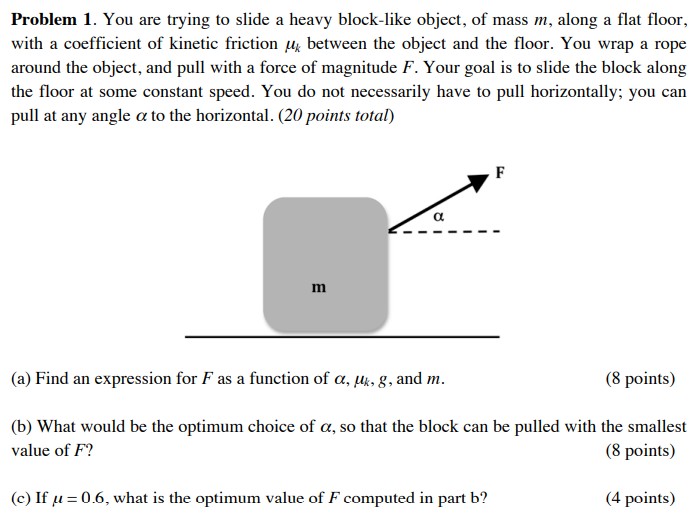Problem 1. You are trying to slide a heavy block-like object, of mass m, along a flat floor, with a coefficient of kinetic friction μk between the object and the floor. You wrap a rope around the object, and pull with a force of magnitude F. Your goal is to slide the block along the floor at some constant speed. You do not necessarily have to pull horizontally; you can pull at any angle α to the horizontal. (20 points total) (a) Find an expression for F as a function of α, μk, g, and m. ( 8 points) (b) What would be the optimum choice of α, so that the block can be pulled with the smallest value of F ? (8 points) (c) If μ = 0.6, what is the optimum value of F computed in part b ? (4 points)
